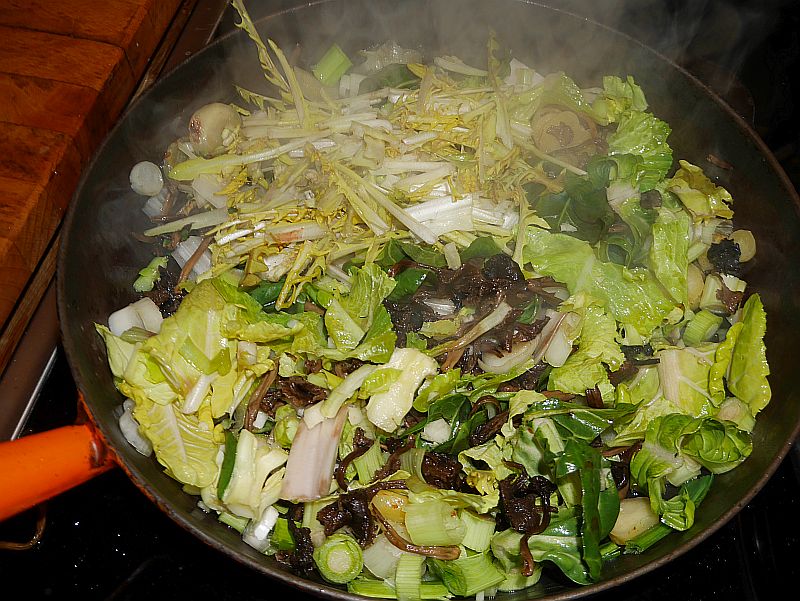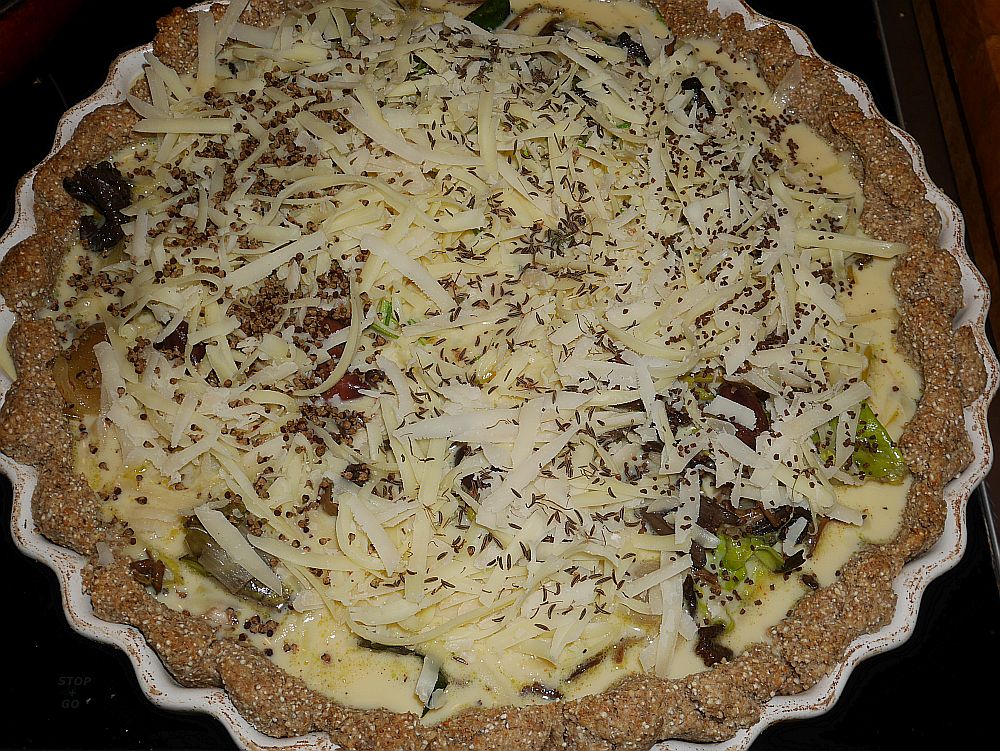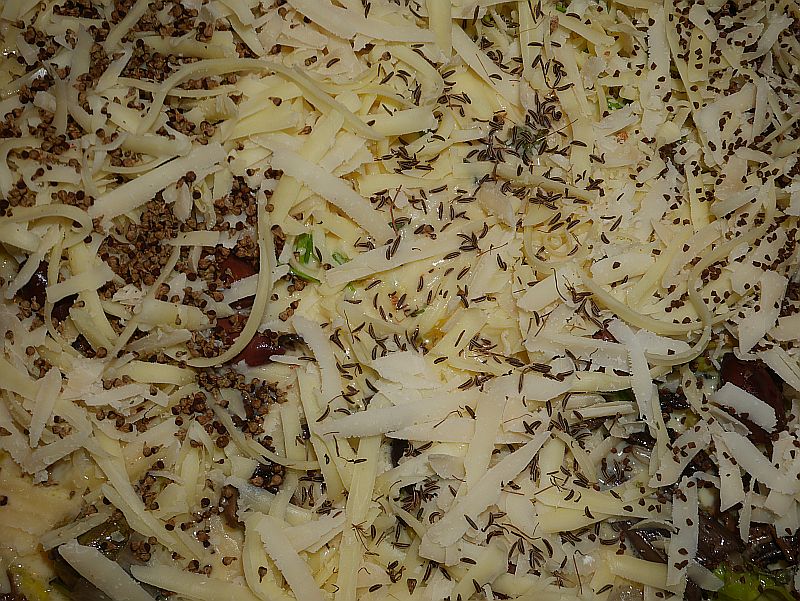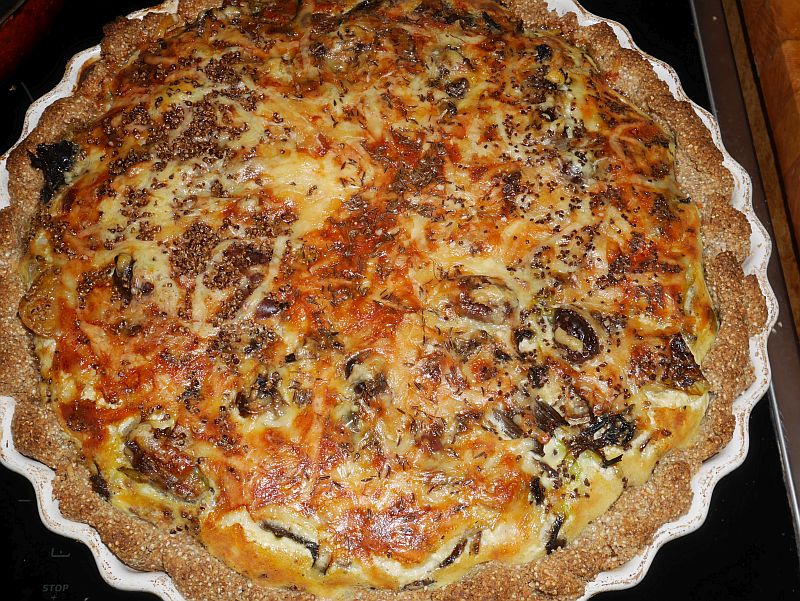I’m often asked what I do with all my winter perennial shoots and other stored vegetables! One favourite is a vegetarian quiche (eggepai). Easy to make and it lasts 2-3 days!
Daily Archives: January 24, 2019
Seed fall
It’s the time of year for seed to start falling into my postbox! Today seed arrived both from Scottish Rock Garden Club and Alpine Garden Society! Observant followers will notice I have seed for the first time of two new white flowered dandelions, Taraxacum denudatum and Taraxacum hideoi :)

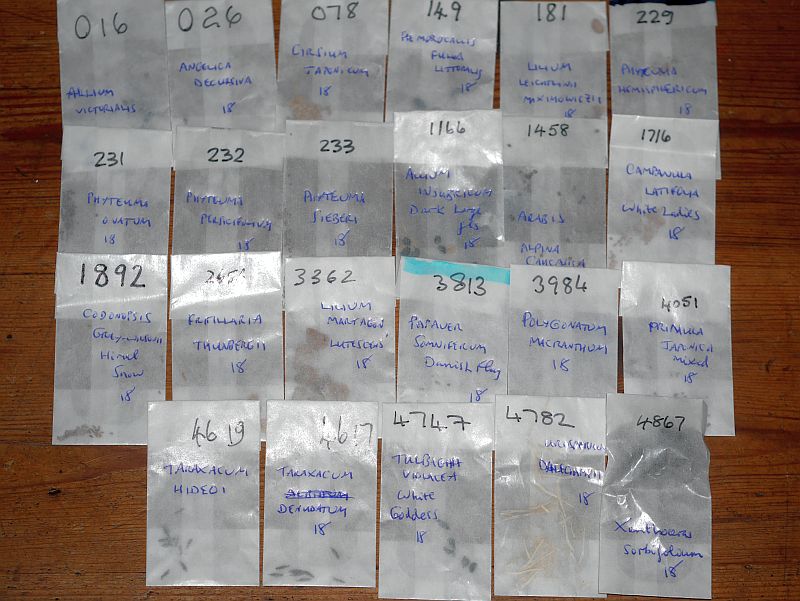
Protected: Svartelistet norske matplanter
Om Scorzonera: en hardfør helårs grønnsak
English speakers: See the summary at the bottom!
Skorsonerrot, svartrot, jordskonnerot eller bondeasparges Scorzonera hispanica er en av de nye rotgrønnsakene som har kommet til Norge de siste årene. De fingertykke røttene med hvitt fruktkjøtt serveres på de beste gourmetrestauranter. Men, dette er en grønnsak som har vært dyrket her til lands helt siden 1600-tallet. Dyrket som flerårig grønnsak kan planter bli gammel (minst 50 år pluss) og alle plantedelene kan spises fra vår-rosettene til de søte blomsterstengelene, blomsterknopper og kronblad. Jeg har tidligere skrevet artikler om denne planten både i Våre Nyttevekster i 2012 og i min bok Around the World in 80 plants fra 2014. Dette er en “må-ha” grønnsak i min hage!
De siste årene har det kommet frem mye nytt om denne planten og slektningene i den etnobotaniske litteraturen. Derfor tenkte jeg at det var på tide å oppdatere tidligere artikler og resultatet finner dere nedenfor (på norsk)! Jeg håper det faller i smak!
Om du kjenner til en gammel scorsonerrot plante, ta gjerne kontakt!
Takk til Landbruksdirektoratet som har støttet dette arbeidet gjennom prosjektet «Kartlegging – innsamling- dokumentasjon og vurdering av genetisk mangfold av spiselige planter i Norge»
Takk også til Guri-Kristina Batta Bjørnstad for korrekturlesing og faglige kommentarer!
English Summary: Scorzonera hispanica is one of the new root vegetables that has come to Norway in recent years. The finger-thick roots with white flesh are served at the best gourmet restaurants. However, this is a vegetable that has been cultivated here in Norway and elsewhere in Europe since the 17th century. Grown as a perennial vegetable, plants can grow old (at least 50 years plus) and all plant parts can be eaten from the spring rosettes to the sweet flower stems, flower buds and petals. I have previously written articles about this plant both in the Norwegian Useful Plants Society journal Våre Nyttevekster in 2012 and in my book Around the World in 80 plants from 2014. This is a “must-have” vegetable in my garden!
In recent years, much new information has emerged about this plant and its relatives in the ethnobotanical literature. Therefore, I thought it was time to update previous articles and the result can be found (in Norwegian) in the link! There is a comprehensive table in the article which is in English summarising the traditional use of this plant in Europe! I hope to translate this into English when I get more time….
The perennial Rampions: shade tolerant edientomentals!
This is my third article published here this week, written as part of a 3-year project funded Landbruksdirektoratet (Norwegian Agriculture Agency), this time in English! As the last two plants, Scorzonera and Good King Henry, the perennial rampions (Phyteuma spp.) are also multi-use plants, having both edible roots, spring shoots, unopened flower spikes and the flowers themselves. In addition, they love to be in the shade, have lovely flowers and are some of the best pollinator plants, perfect for the permaculture or forest garden or just for a shady spot in your garden! Plants that combine food, beauty and are insect friendly are what I call edientomentals!
I hope you enjoy the article which can be downloaded below!
Stolt Henrik: Blad og brokkoli grønnsak, flerårig kornplante og godteri i en og samme plante
English speakers: See the summary at the bottom!
I går publiserte jeg en artikkel om scorsonerrot, en plante med mange bruksområder(se Scorzonera). En annen plante hvor alle deler av planten kan brukes i matlaging er Stolt Henrik (Blitum bonus-henricus ). Jeg har tidligere skrevet artikler om denne planten både i Våre Nyttevekster i 2012 og i min bok Around the World in 80 plants fra 2014.
De siste årene har det kommet frem mye nytt om denne planten i den etnobotaniske litteraturen. Derfor har jeg nå skrevet en oppdatert artikkel og resultatet kan lastes ned nedenfor! Viste du feks at man laget en type halva fra røttene av denne planten i Balkan?
Om du kjenner til en gammel stolt henrik plante eller kan samle frø fra en viltvoksende bestand, ta gjerne kontakt!
Takk til Landbruksdirektoratet som har støttet dette arbeidet gjennom prosjektet «Kartlegging – innsamling- dokumentasjon og vurdering av genetisk mangfold av spiselige planter i Norge»
Takk også til Guri-Kristina Batta Bjørnstad for korrekturlesing og faglige kommentarer!
English Summary: Yesterday, I published an article on Scorzonera, a plant with many uses (see Scorzonera). Another plant where all parts of the plant can be used in cooking is Good King Henry (Blitum bonus-henricus). I have previously written articles on this plant both in Våre Nyttevekster in 2012 and in my book Around the World in 80 plants from 2014.
In recent years, much new information about this plant has been published in the ethnobotanical literature. Therefore, I have now written an updated article and the result can be downloaded above! Did you know, for example, that there was a tradition of making a type of halva from the roots of this plant in the Balkans? I hope to translate this into English when I get more time….
Om Norrlandsløk / Norrland Onion
English speakers: See the summary at the bottom!
Jeg har tidligere skrevet om Norrlandsløk i min bok Around the World in 80 plants. Dette er en spennende storvokst flerårige løk som er funnet i hager i Nord Sverige og en fantastisk matløk, spesielt for kalde strøk (planten kan dyrkes overalt i Norge)! Dette var den første løk som kom på plass i Ringve Botaniske Hagens ny Allium-hage i Trondheim (se http://www.edimentals.com/blog/?p=13525). Takket være et grundig arbeid av en ung svensk student Erik de Vahl vet vi mye mer idag om hvordan denne løken sannsynligvis ble til og fant veien til min hage i Malvik i 2004 via Harstad og Burträsk i Nord Sverige! Dette ble en spennende reise for de Vahl ikke bare nord i Sverige, men også til et «soldattorp» i Västmanland, en benidiktinarkloster og til den store svenske genetikeren Albert Levans som jobbet fra 1929 til 1950-tallet med hybridisering av løk. Derfor har jeg oppdatert historien fra Around the World in 80 plants med ny viten i vedlagt artikkel:
English summary: I have previously written about Norrland Onion in my book Around the World in 80 plants, an exciting productive perennial onion found in gardens in northern Sweden! This was the first onion that was planted in the new Allium garden at Ringve Botanical Garden in Trondheim (see http://www.edimentals.com/blog/?p=13525). Thanks to the thorough work by a young Swedish student Erik de Vahl, we know much more today about how this onion found its way to my garden in Malvik in 2004 via Harstad and Burträsk in northern Sweden! It was an exciting journey that de Vahl enravelled taking him not only to the north of Sweden, but also to a “soldier’s croft” in Västmanland, a benedictine monastery and to the great Swedish geneticist Albert Levans who it turns out worked from 1929 to the 1950s with the hybridization of onion species. Therefore, I have updated the story from Around the World in 80 plants with new knowledge in the attached article! I will hopefully later translate this to English.

